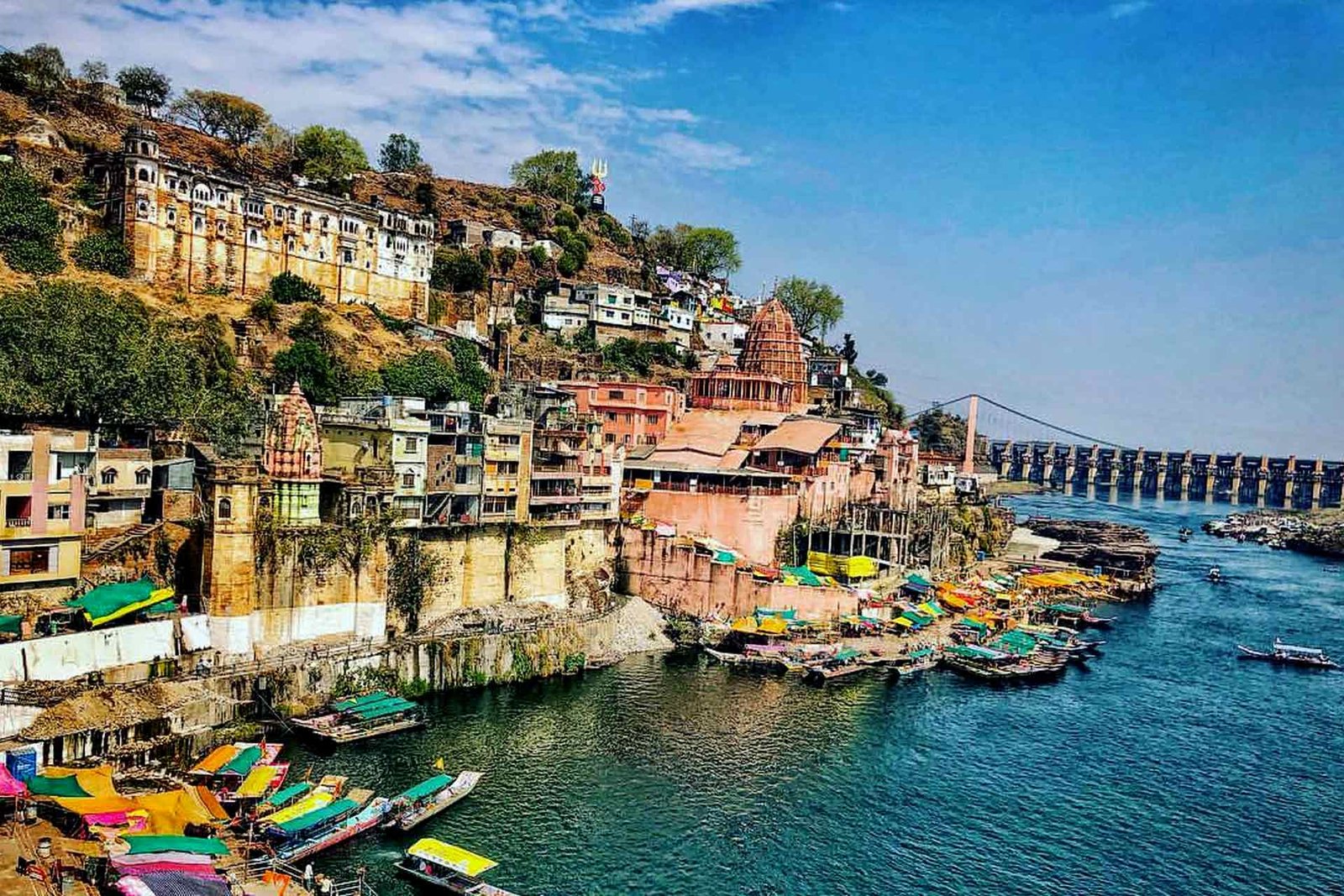The Omkareshwar Temple
Hello Everyone My Name is Vivek Chaturvedi. I am write a blog about The Omkareshwar Temple.
Omkareshwar is a Hindu temple dedicated to God Shiva. It is one of the 12 revered Jyotirlinga shrines of Shiva. It is on an island called Mandhata or Shivpuri in the Narmada river at Khandwa district in Madhya Pradesh, India; the shape of the island is said to be like the Devanagari ॐ symbol.
There are two main temples of Lord Shiva here, one to Omkareshwar (whose name means "Lord of Omkara or the Lord of the Om sound") located in the island and one to Mamleshwar (whose name means "Immortal Lord" or "lord of the Immortals or Devas") located on the south bank of Narmada River on the mainland.
Location
It is situated in the Mandhata city (also known as Omkareshwar) in Khandwa district of Madhya Pradesh state in India. It is about 12 km from Mortakka in Madhya Pradesh. Omkareshwar is formed by the sacred river Narmada. This is one of the most sacred rivers in India and is now home to one of the world's biggest dam projects. The temple is situated on Mandhata or Shivpuri island on the banks of Narmada and river Kaveri (a tributary of Narmada). The island is 4 KM long and 2.6 km2 (2,600,000 m2) in area and can be approached by boats and bridge.
Jyotirlinga
Thetwelve jyothirlingas are Somnath in Gujarat, Mallikarjuna at Srisailam in Andhra Pradesh, Mahakaleswar at Ujjain in Madhya Pradesh, Omkareshwar in Khandwa in Madhya Pradesh, Kedarnath in Himalayas, in Uttrakhand state, Bhimashankar in Maharashtra, Viswanath at Varanasi in Uttar Pradesh, Triambakeshwar near Nashik in Maharashtra, Baidyanath Temple, Deogarh in Jharkhand, Nageswar at Dwarka in Gujarat, Rameshwar at Rameswaram in Tamil Nadu and Grishneshwar near Aurangabad, Maharashtra in Maharashtra.
History
The second story relates to Mandhata and his son's penance. King Mandhata of Ikshvaku clan (an ancestor of Lord Ram) worshipped Lord Shiva here until the Lord manifested himself as a Jyotirlinga. Some scholars also narrate the story about Mandhata's sons-Ambarish and Muchukunda, who had practiced severe penance and austerities here and pleased Lord Shiva. Because of this, the mountain is named Mandhata.
The third story from Hindu scriptures says that once upon a time there was a great war between Devas (gods) and Danavas (demons), in which Danavas won. This was a major setback for Devas and hence Devas prayed to Lord Shiva. Pleased with their prayer, Lord Shiva emerged in the form of Omkareshwar Jyotirlinga and defeated Danavas.
Philosophy of Omkaar - Advait Matt says Omkaar is composed of two words, Om (sound) and Akaar (srishti). Both are one not two since Advait means "not two". Om beej mantra of Srishti, itself is creator of Srishti.
Adi Shankara's Cave – Omkareshwar is said to be the place where Adi Sankara met his guru Govinda Bhagavatpada in a cave. This cave can be found even today just below the Shiva temple where an image of Adi Shankara has been installed.
I am request all of you after lockdown please go one time in your life.
Thanks for Reading. Please comment me are you like my blog. Please share with your family members and friends.





Comments